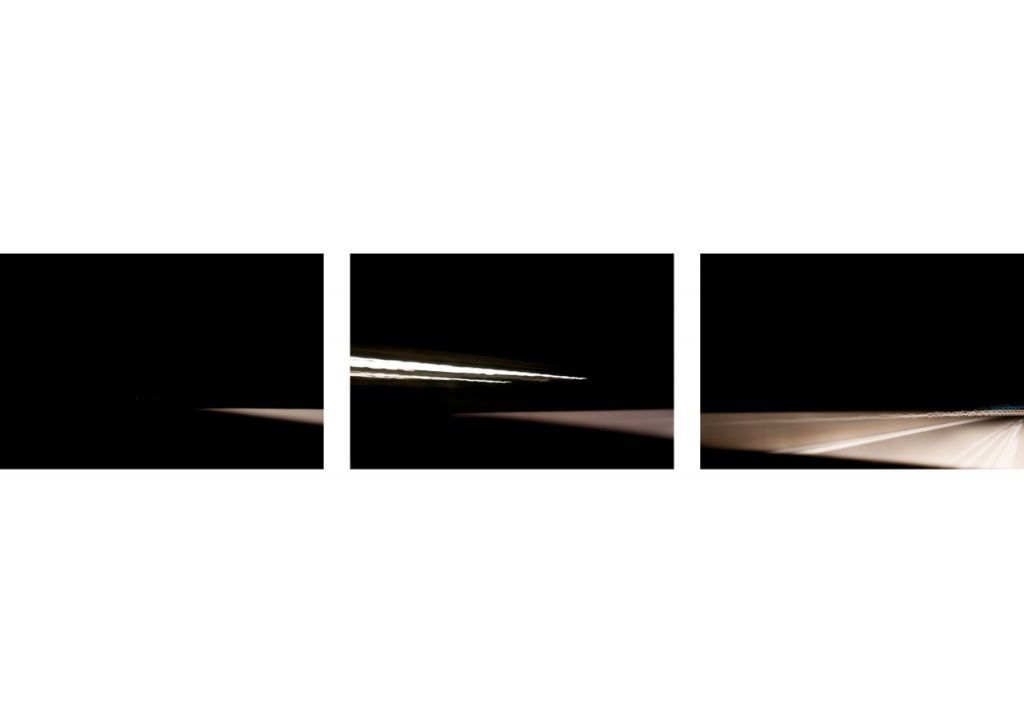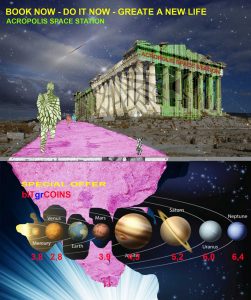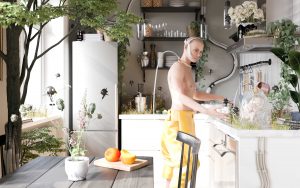
The Return
From the body of work Moving Still, Still Moving
Moving Still, Still Moving
Moving Still, Still Moving presents a series of abstract landscapes, as these take form through a state of motion. Rather than being driven by the need to demonstrate formal possibilities, instead, this work intends to capture perceptual and interpretational possibilities of space and time, much reflecting upon Albert Einstein’s theory of Space-Time. Emphasis is given to horizontal compositions, where color, or lack thereof, draws attention to the voids, or what appear to be carefully rendered lines creating space. The images fluctuate between calculated efforts and spontaneity, without ever committing to either state. Presented in diptychs and triptychs due to their fluidity and the continuum nature of time, each image depicts a moment moving in space, where the past, present and future merge and manifest as a morphing synthesis of time. The paired images however, have not necessarily been taken in sequence or at the same location as one might expect. Such antithesis raises the question of the interrelationship between time and space, as well as our own perceptual expectations. During the photographic process, there is also a constant shift in the artists’ perception of time and space, as the point of focus changes within her optical field. Shifting dimensions occur from manipulating the lens, alternating depths of field and creating a non-specified positioning of the subject in the image. Simultaneously, a sense of acceleration or deceleration is experienced, even though gravity anchors her to the same position whilst moving at a relatively steady speed. This aesthesis of time disruption echoes Einstein’s Time Dilation theory which showed that time was measured differently from a clock in a moving vehicle vs. a clock that was still. This altered interpretation of time forces the question of whether one’s perception is reality or merely a misinterpreted cognitive process. These shifts also take root on a deeper personal level; (where) time merges, the artist and viewer are called upon to reflect on what is “lost time.” This body of work presents the artists’ struggle, and ultimate triumph, over the dreadful passage of time weighed against unmet goals of personal growth and artistic expression. The result culminates in exciting visual landscapes that focus on the perpetual present.
Christina Pappas (GR)
Christina Papas (b. South Africa, 1981) is a Fine Art Photographer and visual artists based in Greece. Parallel to her career in Communications and Creative direction, , working for companies varying from Hermès to Sony BMG, she works as an artist using photography as her primary medium of expression. Her photography reveals the curious approach with which she perceives and interacts with her environment. With a tendency to focus on macro-details, she seeks to discover microcosms and transform them into new landscapes. Fascinated by Albert Enstein’s theory of space-time and the cognitive process of perception, interpretation and memory, Christina’s work questions the self, its interrelationship with time and nature and their continuum progression.




